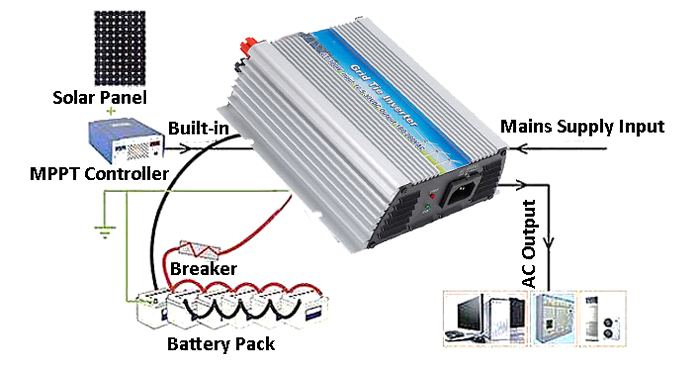The solar power inverter not only has the function of DC-AC conversion, but also has the function of maximizing the function of solar cells and system maintenance. This article mainly focuses on solar power inverter’s automatic operation and shutdown function and maximum power tracking control function.

Automatic operation and shutdown function
After sunrise in the morning, the solar radiation intensity gradually increases, and the output of the solar cell also increases. When the output power required by the solar power inverter is reached, the inverter starts to operate automatically. After entering the operation, the solar inverter will take care of the output of the solar cell module all the time. As long as the output power of the solar cell module is greater than the output power required by the inverter task, the inverter will continue to operate. The inverter can also run on rainy days. When the output of the solar cell module becomes smaller and the output of the inverter is close to 0, the solar inverter will form a standby state.
Maximum power tracking control function
The output of the solar cell module changes with the solar radiation intensity and the temperature of the solar cell module itself (chip temperature). In addition, because the solar cell module has the characteristics that the voltage decreases with the increase of the current, there is an optimal task point where the maximum power can be obtained. The intensity of solar radiation is changing, and so is the apparent optimal mission point. Regarding these changes, the task point of the solar cell module is always at the maximum power point, and the system has always obtained the maximum power output from the solar cell module. This control is the maximum power tracking control. The biggest feature of inverters for solar power systems is that they include the function of maximum power point tracking (MPPT).
